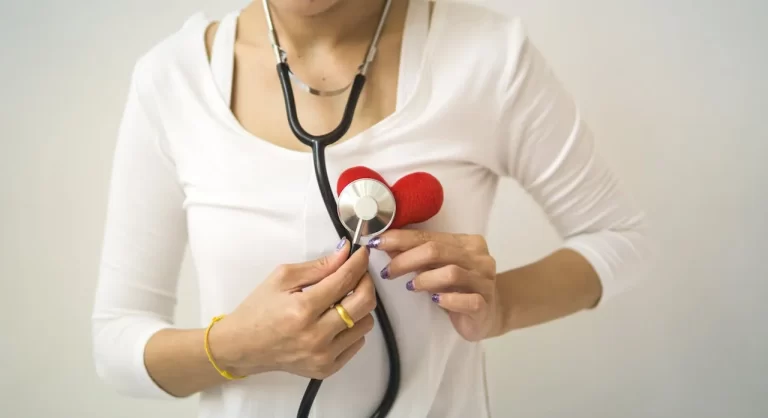Wichtige Punkte
- Cardiovascular problems remain the leading cause of death worldwide, but many cases are preventable.
- Prevention strategies include balanced nutrition, regular physical activity, stress management, and routine screenings.
- For those already living with heart problems, effective management combines lifestyle changes, therapies, and medical oversight.
- Emerging therapies and technologies offer new ways to monitor and support long-term cardiovascular well-being.
Why Protecting Your Heart Matters More Than Ever
Every 34 seconds, someone in the United States dies from a cardiovascular problem, making it the number one cause of death worldwide [1]. Yet experts emphasize that many of these cases could be prevented—or better managed—with consistent attention to heart health fundamentals.
So what does it really take to protect your heart? The answer isn’t found in quick fixes or miracle cures, but in a combination of evidence-based habits, early detection, and smart management strategies.
The Growing Burden of Cardiovascular Symptoms
Heart health matters not just for longevity but for everyday quality of life. Symptoms such as rapid heartbeat, shortness of breath, or chest discomfort can disrupt work, family, and independence. Left unaddressed, these symptoms increase the risk of disability, reduced mobility, and premature death [2].
The stakes are especially high because cardiovascular problems often develop silently. By the time warning signs appear, damage may already be advanced [3]. That’s why prevention and early management are so critical.
Recognizing Early Signs and Their Daily Impact
Cardiovascular symptoms can look different for everyone, but common warning signs include:
- Chest discomfort or pressure during activity or rest.
- Heart palpitations (irregular or pounding sensations).
- Shortness of breath, especially during physical exertion.
- Swelling in the legs and ankles, which may indicate fluid buildup.
- Extreme tiredness, often overlooked as “normal aging.”
These symptoms affect not just physical function but also emotional well-being. Many users report anxious thoughts, sleep problems, and reduced confidence in daily activities [4].
The Science Behind a Healthy Heart
At its core, the heart is a pump—moving blood, oxygen, and nutrients throughout the body. When arteries narrow from plaque buildup (atherosclerosis) or blood pressure rises unchecked, the system is strained. Over time, this increases the risk of heart attacks, strokes, and other heart problems [5].
Scientific studies show that lifestyle choices strongly influence these mechanisms. For example, diets high in saturated fat and sodium contribute to arterial plaque, while regular movement improves blood vessel flexibility and reduces inflammation [6]. Stress, too, plays a role—triggering hormonal cascades that raise blood pressure and affect heart rhythm [7].
Prevention Made Practical: Four Proven Habits
Fortunately, everyday actions can meaningfully reduce cardiovascular risk. Experts consistently point to four pillars:
- Eat for your heart – Emphasize whole foods like vegetables, fruits, lean proteins, whole grains, and omega-3-rich fish. Limit ultra-processed foods, added sugars, and excess sodium [6].
- Move regularly – Aim for at least 150 minutes of moderate activity weekly. Walking, swimming, or cycling all support cardiovascular resilience [8].
- Manage stress effectively – Practices such as meditation, slow breathing, or journaling lower stress hormones and improve heart rhythm stability [7].
- Stay on top of screenings – Routine blood pressure, cholesterol, and blood sugar checks catch risk factors early, allowing for timely intervention [5].
Smart Management for Existing Heart Problems
For users already living with heart problems, management requires a structured approach:
- Medication adherence: Prescribed therapies, such as statins or blood pressure–lowering drugs, can reduce complications when taken consistently [2].
- Lifestyle alignment: Healthy eating, activity, and stress management remain just as important after diagnosis.
- Symptom monitoring: Tracking weight, swelling, and pulse helps detect early changes.
- Collaborative care: Regular check-ins with health professionals ensure therapies remain effective and adjusted to evolving needs.
New wearable devices are also empowering individuals to monitor heart rhythms and vital signs in real time—providing data that supports proactive care [3].
Innovations Shaping the Future of Heart Health
Innovations in cardiovascular care are moving quickly. From minimally invasive procedures that restore blood flow, to personalized therapies based on genetic markers, the future of heart health is expanding [4]. Wearable technology is also making it easier to spot abnormalities early, helping users and health professionals act before a crisis occurs.
Taking the Next Step Toward a Stronger Heart
Supporting heart health is less about dramatic overhauls and more about small, consistent choices. Whether you’re starting with 10-minute walks, swapping sugary snacks for fruit, or setting reminders for health check-ups, the path forward is built on steady habits.
If you experience symptoms such as chest discomfort, rapid heartbeat, or unexplained tiredness, seek professional advice promptly. Early action can make all the difference.
Conclusion: Building Lifelong Cardiovascular Resilience
Your heart doesn’t just keep you alive—it powers your independence, energy, and joy. By blending prevention with thoughtful management, you can dramatically lower your risks and improve daily well-being. Protecting your heart starts today—with the choices you make and the attention you give to this remarkable organ.
Der Artikel stellt in keiner Weise eine medizinische Beratung dar. Bitte konsultieren Sie einen zugelassenen Arzt, bevor Sie eine Behandlung beginnen. Diese Website kann Provisionen für die in diesem Artikel erwähnten Links oder Produkte erhalten.
Quellen
- Centers for Disease Control and Prevention. (2024). Heart Disease Facts. https://www.cdc.gov/heartdisease/facts.htm
- American Heart Association. (2023). Heart Disease and Stroke Statistics—2023 Update. https://www.ahajournals.org
- National Institutes of Health. (2023). Heart Health Overview. https://www.nih.gov
- World Health Organization. (2023). Cardiovascular diseases (CVDs). https://www.who.int/news-room/fact-sheets/detail/cardiovascular-diseases-(cvds)
- Mayo Clinic. (2024). Heart Disease: Symptoms and Causes. https://www.mayoclinic.org
- Harvard T.H. Chan School of Public Health. (2024). Nutrition and Heart Health. https://www.hsph.harvard.edu/nutrition
- Harvard Health Publishing. (2024). Stress and Heart Health. https://www.health.harvard.edu
- National Heart, Lung, and Blood Institute. (2023). Physical Activity and Your Heart. https://www.nhlbi.nih.gov
Last Updated on September 2, 2025



